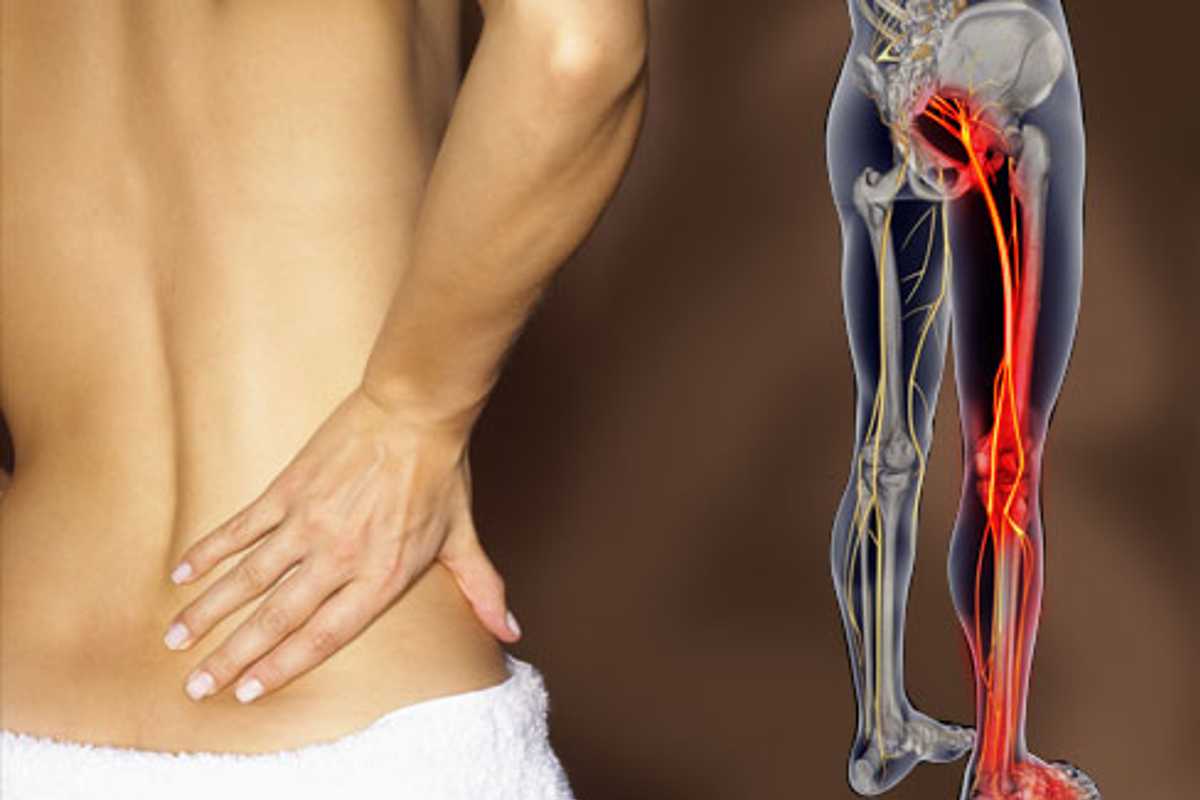Leg and Back Pain: Is My Back Pain Related To My Leg Pain?

Leg and Back Pain: If you’ve ever played Jenga, you know that removing one block can make the whole tower tumble down. What does Jenga have to do with your body? The same principle that causes the tower of blocks to tumble can cause pain.
The block that you removed was touching several other blocks. But removing it didn’t just affect those surrounding pieces. It caused blocks that were several layers down, even to the bottom, to fall. The human skeletal system is similar. One torque or misalignment of vertebrae in the spine can translate to pain from your head all the way to your feet.
Many lower back disorders cause referred pain in the leg or foot. So what should you do if you have leg pain? There are many diseases and conditions that cause leg pain, making self-diagnosis virtually impossible. A better idea would see a chiropractor or osteopath, both of who understand the complexities of the musculoskeletal system and can help to identify the source of your back or leg pain.
Understanding The Spine
Your spine is made up of 33 vertebrae, bones that are stacked from the neck to the tailbone. The spine is made up of four regions:
- The cervical spine includes seven flexible vertebrae that support the head.
- The thoracic spine includes the 12 vertebrae that are lateral to the chest and ribs.
- The five lumbar vertebrae carry the majority of the body weight.
- The sacral region helps distribute body weight to the pelvis and hips.
The spinal cord is housed in the center of the spinal column running through the vertebrae. Nerves provide the connection from the spinal cord to travel to the entire body allowing muscles to function and feelings and sensations throughout the body.
Also Read: How a Protein Shake Diet Can Work for You
Helping To Identify The Problem
Any doctor worth his salt will tell you that the best diagnostic technique is anecdotal evidence. That’s why on the first visit to any doctor, you’ll likely answer a lot of questions before a diagnosis or treatment plan can be given.
You can assist your doctor in coming to a quick diagnosis if you go in armed with a journal of your activities that document when the pain started, what seems to aggravate or relieve the pain, and the intensity of the pain over a period of a few days. Common symptoms to note include:
1. Radiating pain
2. Numbness
3. Weakness
4. Foot pain
5. Back pain
6. Tingling
Common Conditions With Combined Leg And Back Pain
There are several common conditions that present with a combination of leg and back pain.
- Sciatica: Pain typically starts with the inflammation or pinching of the sciatic nerve located in the lower back. Symptoms include radiating pain from the lower back down to the foot, numbness, and tingling. Sciatica can present as a secondary condition caused by another muscular or spinal condition.
- Herniated Disc: Often a herniated disc in the lumbar region of the back is the cause of pain in the leg. Also known as a slipped or ruptured disc, it occurs when the soft inner core of the disc leaks out through the fibrous outer core irritating the contiguous nerve root at the point where it exits the spine. Symptoms include transferred or radiating leg and foot pain, pain in the lower back or buttocks, and weakness or numbness in the legs.
- Degenerative Disc Disease: This condition, also called Spondylosis occurs when the cartilage between the vertebrae degenerates over time. This condition can occur in any vertebrae in the spine but is often found in the neck or lumbar part of the back. Low back pain is the main symptom of lumbar disc disease with pain increasing when sitting or standing for long periods of time.
- Piriformis Syndrome: This pain is very similar to that of sciatica. The condition is neuromuscularly caused when the piriformis muscle in the buttock compresses the sciatic nerve. Pain, weakness, and tingling usually start in the buttocks and often extend down one leg.
- Spondylolisthesis: This condition is caused by vertebrae slipping out of line from the neighboring vertebrae. There are several causes and types of the condition, some from birth defects and others from injury, tumors, or repetitive trauma. Lower back pain is the most common symptom, though it can be accompanied by tightness of the hamstrings, decreased range of motion in the lower back and hips, numbness, tingling, and weakness in the legs. Loss of bladder control can also be a less common symptom.
- Sacroiliac Joint Dysfunction: While most of the vertebrae in the spine are separate and can move independently, the sacrum is made up of five vertebrae that are fused together and do not move. The condition is caused by inflammation of the sacrum and can be caused by other joint disorders including arthritis and gout.
The Best Treatment Plan
It’s important to seek help for any back or leg pain. Chances are good that a non-surgical approach can treat or cure the condition. Chiropractors specialize in joints and the spine and are often the best first solution to diagnose and treat pain with a simple and fast approach.
Also Read: 5 Ways To Manage Back Pain At Home